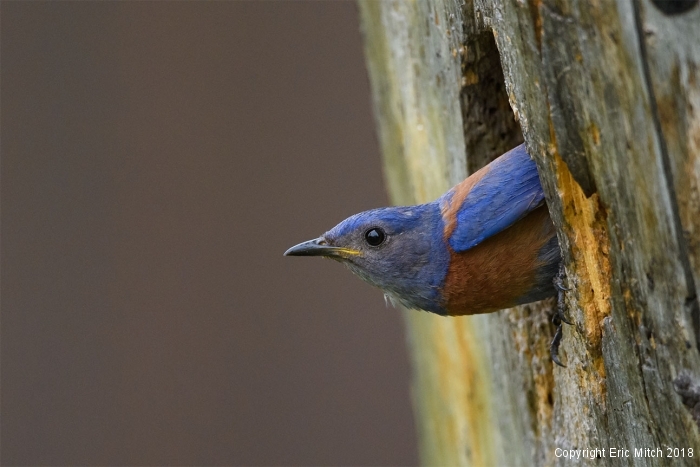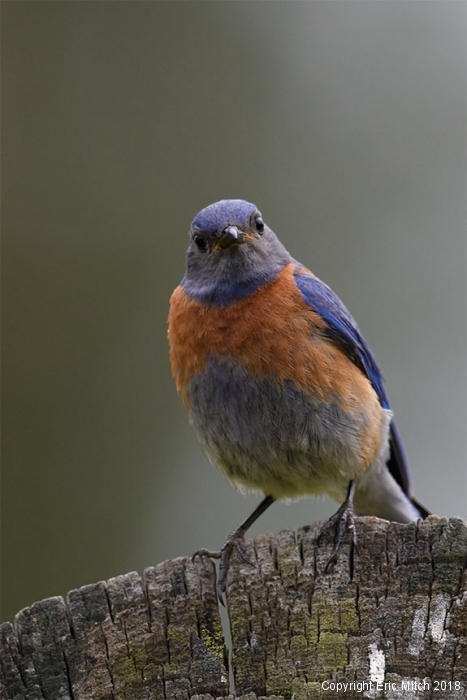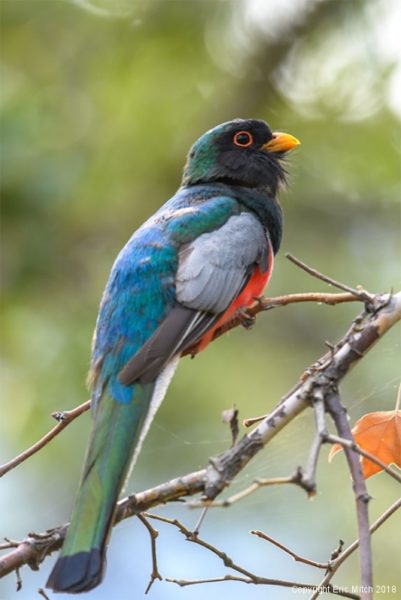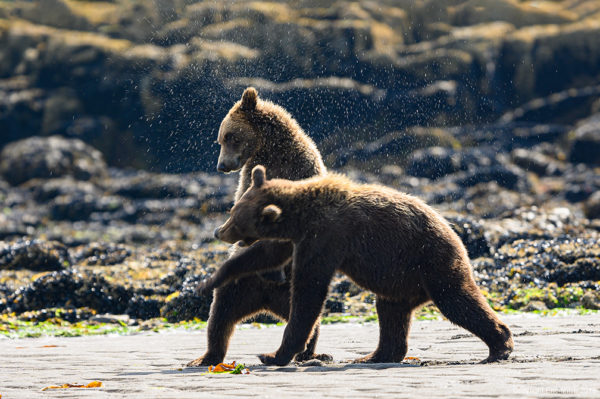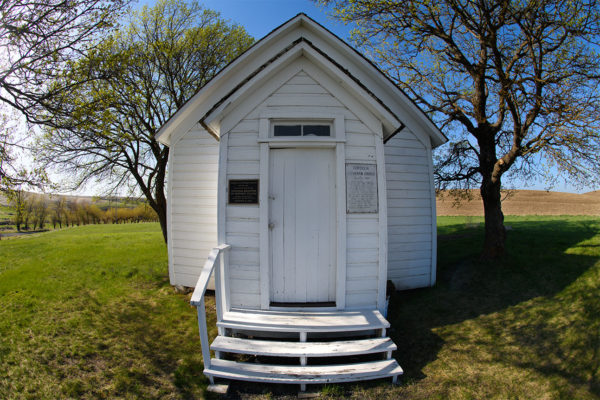We have spent the weekend looking for “elusive” Great Gray Owls in Eastern Oregon. Elusive in that we have not seen any. But that is one important lesson in wildlife photography. There is no guarantee that your subject is going to present itself. Patience is a virtue and can also be a frustration. So what do you do when your subject or the weather is not cooperating? You start photographing other potential subjects or go find some good food… and maybe get a blog post out of it. We did both. (I did all three). I was watching for great gray owls when I saw the brilliant western bluebird dart between two trees. You can’t miss it.
Then I saw it dart towards another tree but kept going. It passed a tree snag and didn’t come from around the other side. I told my friends I think they are nesting in that snag. So we went over to investigate. The next thing is I see a blue object dart out from the snag and head up to a tree. Bingo. The cavity where the western bluebird came out of was practically eye-level. So we decided we were going to spend some time with the western blue bird.
The western bluebird lays between 4-6 eggs. That’s quite a few mouths to feed so we see the parents darting in and out of the cavity carrying in insects out out with fecal sacs. The trick is to catch the birds stopping at a perch before heading in to the cavity. What we found was the female was quite good and just zooming right in to that cavity without slowing down. We thought she embedded her beak into the back wall of the cavity she was so fast.
Every one in a while if one of the parents was occupying the nest, the other would stop outside and wait their turn or pass the meal on to the other partner. These are what made the great shots.
Now these aren’t very big birds. They are maybe a little larger than your thumb. Getting close is paramount but can be more difficult done than said. We all lined up next to each other taking turns moving up to the snag. You need to position yourself so you have a clear line of sight to their perches and also a side view of the cavity. A head on view of the cavity does not create a very interesting photo.
You also need long glass and I went as long as I could with my Nikon D5 with Nikkor 800mm with TC-14E III teleconverter and relying on that trusty Nikon High Speed Crop. This put me at 1680mm which is just astounding at isolating your subject. I was also at the near end of my focusing distance which was good because I did not have my extension tubes with me. And with all that glass I was just about right at filling my frame with the subject these guys are so small.
In the end though, since our original subject was being elusive, these guys made great practice and were a lot of fun with all their activity. There was also a lot of biology to learn about cavity nesting birds. These guys have a lot of competition with other birds that use nesting cavity that they rely on other birds to make so they need to get their young grown and moved out in tot he world. I think the birds colors are beautiful and make a captivating photograph.
